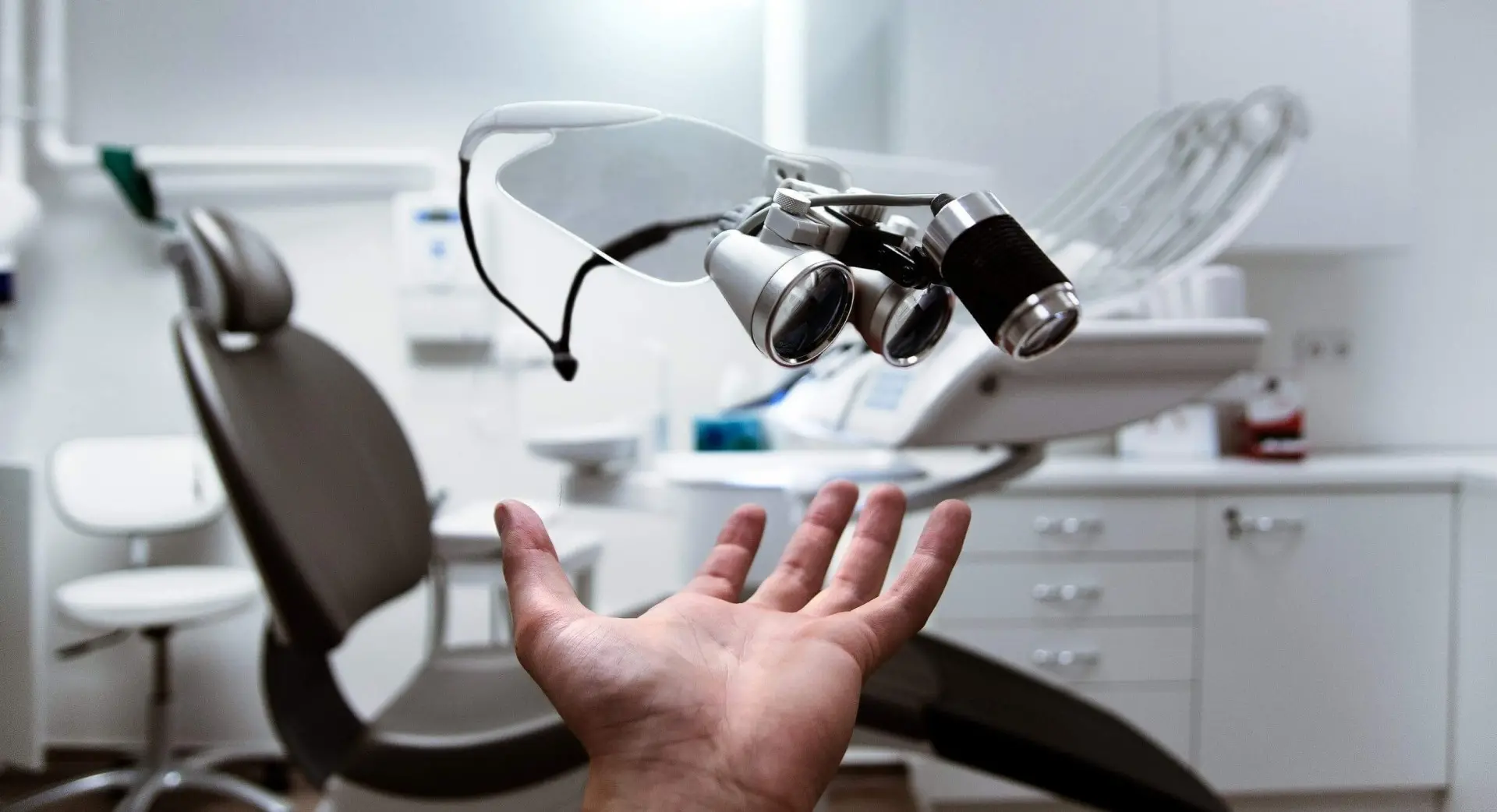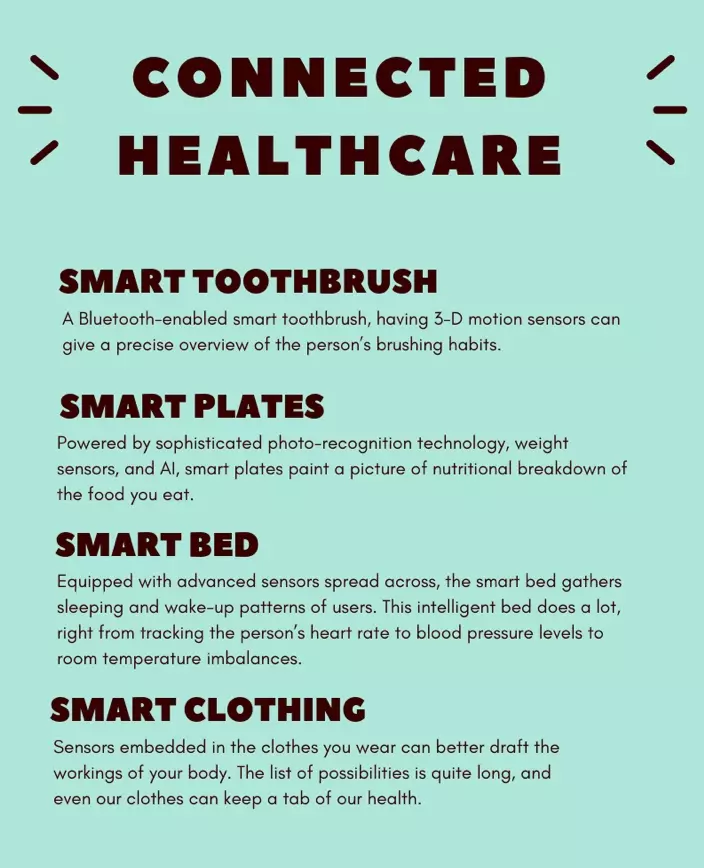Connected healthcare is empowering hospitals and changing every aspect of healthcare.
Remote monitoring, fitness bands, telemedicine, and other wearable technologies are offering incredible patient touchpoints, thereby offering timely and effective healthcare with enhanced satisfaction to patients.
No wonder, connected healthcare is showing tremendous impact in the medical space.
Communication breakdowns, improper diagnosis and treatment, and poor follow-ups cause several deaths. Medical errors rank as the third leading cause of death in the US, according to researchers at Johns Hopkins Medicine. And who is to be blamed? Well, the outdated infrastructure, to be honest. Imagine, how cool it would be if doctors could assess our health conditions remotely, providing accurate treatments even from a distance! Such patient-centric medical care, catering to an individual’s genetic makeup is actually possible with IoT-driven connected healthcare.
In simple words, IoT-driven connected healthcare is about the combination of healthcare providers with innovative tools and apps, intended to deliver superior quality treatment and care. Connected healthcare is about the shift from reactive to proactive medical offerings, accessibility to treatment for everyone, and controlled medical costs. And to do so, healthcare organizations have to tap into the potential of infinite data. Data lying with and flowing into healthcare organizations is huge and is growing continuously. By collecting this valuable data, physicians can garner meaningful insights to offer personalized medical treatment, resulting in patient satisfaction and improved health conditions.
Connected Healthcare: Moving from Reactive to Proactive Healthcare
Over the past several decades, we have seen that healthcare organizations are using digital platforms to store, manage, and access medical data and patient history. The concept of pen and paper has almost completely lost its relevance. Furthermore, rapid innovation in the field of technology has now given rise to a whole new set of sophisticated apps that keep people and physicians connected even outside the four walls of hospitals.
1. Fitness Trackers
Basically fitness trackers are data-acquisition systems, garnering medical information about the one who wears them. It can seamlessly determine the wearer’s walking, sleeping, and exercise patterns. Besides collecting such valuable information, these trackers give pertinent suggestions, helping people stay fit and improve their quality of life. Advanced sensors integrated in the wearable devices can check vitals like the respiration rate, blood glucose and stress levels.
As the health data can be shared over healthcare channels, physicians can carry out check-ups on a daily basis rather than on an encounter-based one. Healthcare professionals can remotely too have a close look at their patient’s health and well-being, thus fostering a proactive approach in providing medical care.
2. Smart Toothbrush
Most of us take oral healthcare for granted. Carelessness in this regard can lead to periodontal disease, gum disease, or more commonly, cavities. The reason for most Americans not seeing a dentist boils down to the associated high-cost. But with smart toothbrushes we can monitor our oral health at home. A bluetooth-enabled smart toothbrush, having 3-D motion sensors, can give a precise overview of a person’s brushing habits. It tracks every minute detail about an individual’s brushing pattern, such as missing spots, areas where extra pressure is applied, inadequate brushing time, and just so much more. So, if the user happens to miss any spot in their mouth while brushing, then the smart toothbrush acts as a virtual mentor, notifying them about the same. Likewise, if the user applies extra pressure while brushing, they will get the notification for pressure adjustment.
3. Smart Plates
Powered by sophisticated photo-recognition technology, weight sensors, and AI, smart plates give a clear nutritional breakdown of the food you eat. Whether you are suffering from diabetes or obesity, or whether you are a health freak, with smart plates you can make healthy eating choices. Smart plates actually act as a food coach, thereby helping you achieve your daily calorie goals.
4. Smart Bed
Equipped with advanced sensors spread across, a smart bed takes note of sleeping and wake-up patterns of users. This intelligent bed does a lot - right from tracking a person’s heart rate to blood pressure level to room temperature imbalances. Besides, it also alerts the user of uncomfortable sleeping positions and snoring. The data collected is then put into good use to give users a better sleeping experience. For example, if the bed detects that the user is snoring, it will elevate the bed and adjust her head. Or, when the temperature in the room drops below comfortable, the smart bed can automatically switch on the foot warmer. Additionally, if the bed senses that your sleeping posture is incorrect, the inflated air tubes in the bed adjust as per your desired comfort.
5. Smart Clothing
It's quite impressive to see that the wearable tech has emerged beyond wrist-worn fitness trackers, now weaving into areas never imagined before. Sensors embedded in the clothes we wear can best monitor our body:
Breast cancer is the second most common cancer. This has propelled researchers into finding out preventive measures to contain this situation. IoT can play an important role in achieving such ambitious goals. Bras embedded with sensors can now check the circadian temperature changes in the breast. The background process includes AI that detects abnormal cellular changes. The wearer will receive alert notifications on their smartphone or PC if the algorithm detects any signs of concern.
The survey conducted by the Center for Disease Control and Prevention (CDC) says that 1 in 10 Americans have diabetes. Over time, people with diabetes develop nerve damage issues throughout their body, especially in their feet and legs. Therefore, tiny bruises that can easily go unobserved, could lead to inflammation or even worse loss of limbs. To avoid such a situation, diabetics can wear smart socks that monitor temperature change for feet. By examining such changes, people with diabetes can proactively detect inflammations, which is the early sign of possible foot ulcers and infections.
It is quite impressive to see how the IoT mania is growing continuously not only amongst the tech-savvies but also amongst the commoners. The groundbreaking technology is potentially adding a new life to not only household items but also wearables, adding smartness to preventive care. The potential of IoT-driven connected healthcare to save millions of lives seems really promising, helping combat some of the most thorny challenges that plague the healthcare space today.




Leave your comments
Post comment as a guest